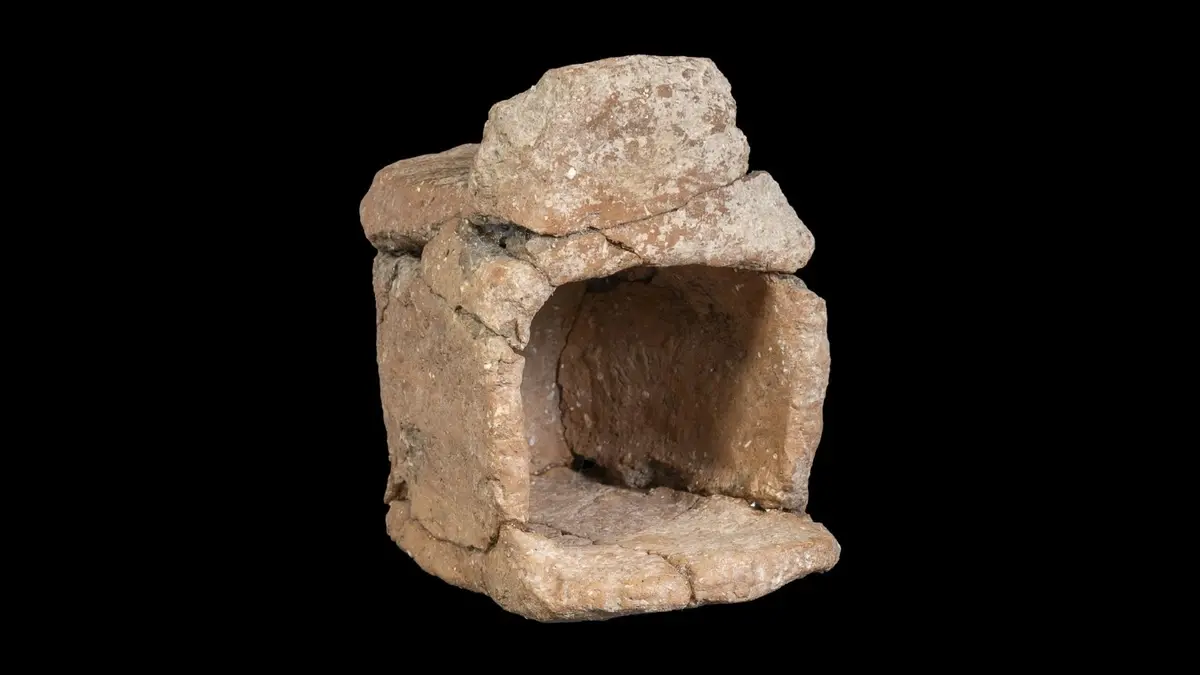 During near the city of Megiddo (also known as Armageddon), Israeli archaeologists stumbled upon unique items dating back 5,000 to 3,300 years, linked to Canaanite cults. Among the Bronze Age discoveries are a service set featuring a ram-shaped teapot, one of the oldest wine presses in the world, and a dollhouse-sized temple.
During near the city of Megiddo (also known as Armageddon), Israeli archaeologists stumbled upon unique items dating back 5,000 to 3,300 years, linked to Canaanite cults. Among the Bronze Age discoveries are a service set featuring a ram-shaped teapot, one of the oldest wine presses in the world, and a dollhouse-sized temple.
The ram’s head serves as the spout of a clay vessel, which archaeologists from the Israel Antiquities Authority (IAA) conveniently dubbed a teapot. “This vessel was likely intended for pouring valuable liquids such as milk, oil, wine, or something else that could be drunk directly from the spout,” the researchers noted in their report. This item may have been used for religious purposes.

In Canaan—a historical geographical region located on the eastern shore of the Mediterranean Sea, including parts of modern-day —domestic animals such as sheep, donkeys, and goats were highly valued. Records indicate that during Egypt’s Old Kingdom (approximately 2649-2150 BC), these animals were raised and then imported to Canaan. They were often used for sacrifices.
Researchers suggested that the teapot and cups were buried as a ritual offering. The artifacts were uncovered at a site where a new road is being constructed in the Jezreel Valley, as reported by Live Science.
Among other Canaanite cult artifacts found in several pits were jars, including some imported from Cyprus. A miniature clay temple particularly piqued the interest of scholars. “This may be what temples looked like in late Bronze Age Canaan,” speculated Amir Golani, one of the study’s leaders.

What else did the researchers report?
People have inhabited Megiddo since around 7000 BC. Over the centuries, numerous battles have taken place there. The Book of Revelation refers to this location as Armageddon, as it is believed that the final battle between good and evil will occur there.
During the excavations at Megiddo, artifacts from two different periods were discovered: the early Bronze Age, or early Canaanite period (about 5,000 years ago), and the late Bronze Age, or late Canaanite period (about 3,300 years ago).
Excavations have been ongoing here for over a century, scientists noted. This ancient city has long been recognized as a site of “ancient urbanism and Canaanite cult.” Participants in the recent excavations explored previously unexamined layers of human activity that occurred around and beyond the city.
The team unearthed a 5,000-year-old wine press, one of the oldest in the world. The press was carved into rock and featured a sloped surface where grapes were crushed, with the juice flowing into a collection vat.
“This wine press is unique, one of the few known presses from that distant period when urbanization began in our region,” the researchers emphasized. “Until now, indirect evidence suggested that wine might have been produced here 5,000 years ago, but we lacked definitive proof,” they added.
Near the press, the team also discovered many residential buildings. This may indicate that the press likely held significant importance for the community.
